Oregon’s Most Endangered Places for 2020 Emphasizes Cultural Heritage of Underserved Communities in Oregon
Restore Oregon works to save Oregon’s at-risk historic properties and uses the Most Endangered Places list to raise public awareness of historically and architecturally significant properties that face threats such as deterioration, neglect, insufficient funds, flawed public policy, and inappropriate development. Over 55 places have been listed since 2011 and, in that time, fewer than 5 have been lost. In efforts to help save these endangered places, Restore Oregon has delivered more than 4,000 hours of preservation consultation, distributed almost $100,000 in seed grants, and leveraged more than $4,000,000 in additional grants and private investment for rehabilitation work.
Nominated from people and organizations across the state, Oregon’s Most Endangered Places list sheds light on important examples of our state’s heritage that are at risk of destruction or irreparable damage. The 2020 list includes endangered places from communities that for too long have been underserved–that embody Oregon’s diverse cultural heritage and require concerted efforts to be retained and passed forward.
The 2020 List includes Three New Endangered Places and Five from Previous Years
New to the list for 2020:
BILLY WEBB ELKS LODGE, PORTLAND (1921)
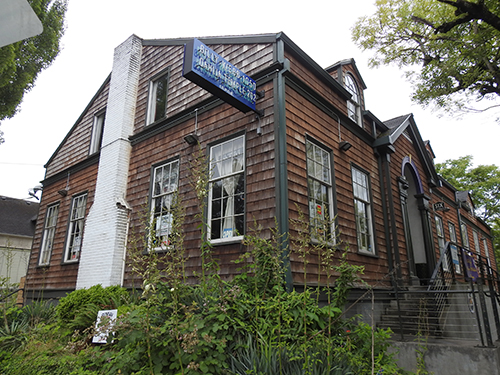
In its 98-year history, the Billy Webb Elks Lodge has served the traditionally African American neighborhood of Albina as a Black YWCA, a USO center for black servicemen, and as a Black Elks Lodge at a time when the Elks organization did not allow black members. Today, the lodge uses the building for community services and as a social gathering place providing an environment that promotes safety, dignity, respect, and pride for people of color who have long and deep ties to the Albina community. As the neighborhood has gentrified, the lodge also welcomes the influx of a primarily white and younger demographic in Albina. However, growing pressure to redevelop the property in the face of dwindling membership is an urgent threat. The building needs substantial physical improvements and upgrades to attract membership and sustain itself as a vital and evolving community gathering place.
MAYO HOUSE, PORTLAND (1895)
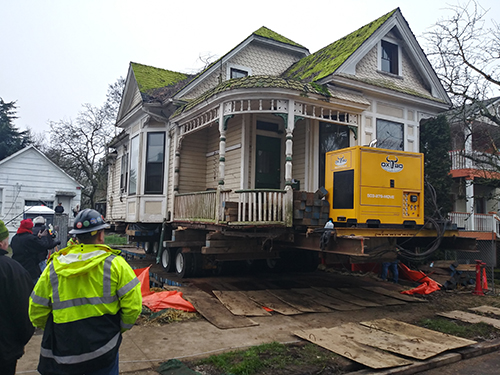
Constructed in 1895, the Mayo House is a Queen Anne Cottage with a complex history. Moved twice previously, Eliot neighborhood residents Cleo Davis and his wife Kayin Talton Davis saved the house from development pressure after appealing to Portland City Council to waive $40,000 in fees required to move the house once more. For the Davises, the City’s approval of the plan holds greater significance than a means to save a historic home from yet another wrecking ball–it signifies a step toward recognition of and atonement for Portland’s decades-long campaign to seize Black-owned homes under the guise of “urban renewal.” To ward against supposed “blight,” the City actively targeted black homeowners with fines, fees, and intimidation from the 1940s through the 1990s. Cleo Davis’ grandmother was one such owner who, in the 1980s was forced to relinquish ownership of her boarding house and watch it be demolished. The Mayo House now sits on the property, representing an opportunity to repair a grave injustice. The Davises envision the Mayo House with a multipurpose future by creating a hub for African American arts, history, and culture.
OREGON’S RURAL HISTORIC THEATERS, STATEWIDE
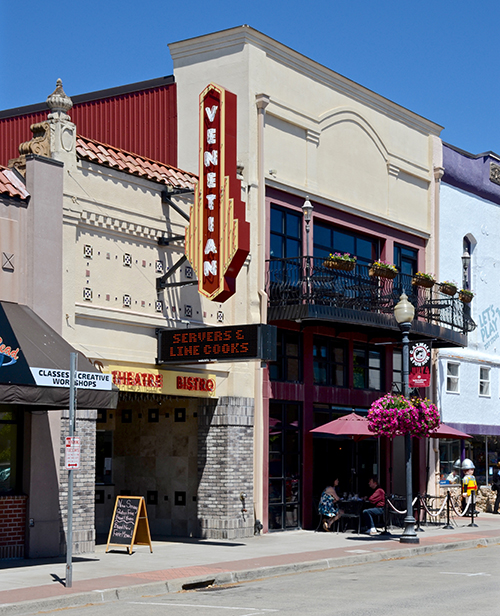
Oregon’s rural communities have not received the attention and resources of larger metro areas and have struggled in shifting economic times to keep their Main Streets vibrant. Historic theaters at the heart of these communities provide a unique gathering place that
anchors downtown, offering entertainment, renewed nightlife, and participation in cultural events. Restore Oregon’s work with historic theater owners and operators over the last five years has shown that revival of these community cornerstones is often the catalyst for a much larger renaissance. By placing rural historic theaters on the 2020 List of Endangered Places, Restore Oregon is able to renew its focus on bringing the economic and social benefits of theater rehabilitation to small towns across Oregon.
Returning to the list from 2019:
CUMBERLAND CHURCH, ALBANY (1892)
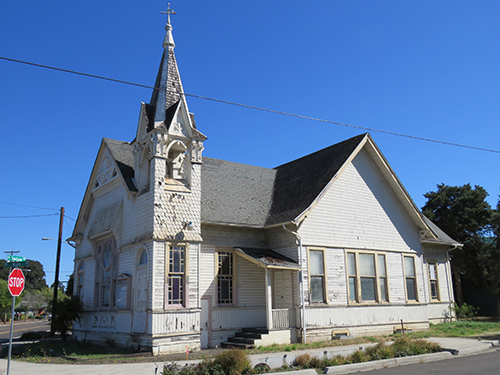
The Cumberland Presbyterian Church, also known as the Main Street Church, has stood as a landmark anchoring east Albany for 127 years. It retains its unique historical integrity through Queen Anne architectural details including original stained-glass windows, doors, and ornate trim work and is eligible for listing in the National Register of Historic Places. Restore Oregon is assisting the friends group and nonprofit, now named the Cumberland Community Events Center (a nod to its future use), with a redevelopment plan. They have temporarily saved the church from demolition through an appeal to the City Council giving the nonprofit time to plan and fundraise for the church’s relocation and rehabilitation. Get involved in this community-wide project by visiting www.saveourcumberland.org.
JANTZEN BEACH CAROUSEL, PORTLAND (1921)
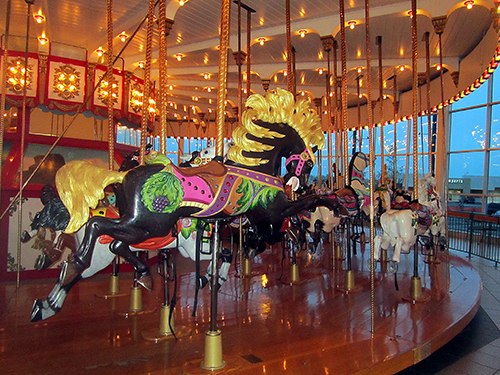
For five years, it languished on our list of Oregon’s Most Endangered Places, its whereabouts unknown. But recently Restore Oregon received this beloved icon as a donation and has since launched a campaign to “Re-TURN the Jantzen Beach Carousel.” Funding raising, conservation, and the search for a new site is well underway. Earlier this year, Restore Oregon unveiled three pavilion design concepts for the carousel and is actively pursuing a new home for this one-of-a-kind Oregon attraction. Learn more about this special project.
ROBERT AND CHARLES WILSON HOMES, WARM SPRINGS (1947)
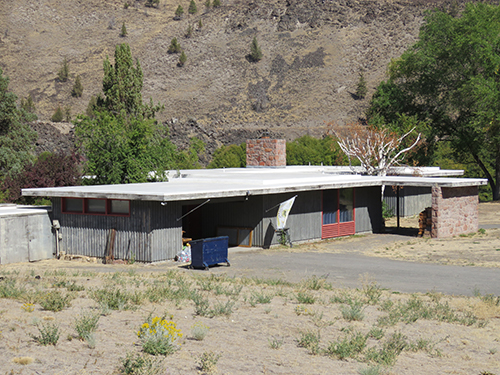
Designed by world-renowned architect, Pietro Belluschi, the Robert and Charles Wilson homes are outstanding examples of high-style, mid-century modern architecture. For the Confederated Tribes of Warm Springs, however, they reflect a cultural struggle over land ownership and the timber industry. Both houses are in poor condition, but the larger house has badly deteriorated, sitting without a tenant for 23 years. Both homes retain original floor-plans and mill-work and the Tribes have made numerous efforts to preserve the property. Restore Oregon is working to assist them in conducting emergency stabilization and carrying out an adaptive reuse plan to promote future awareness of tribal culture and develop their tourism industry. Contact Preservation Programs Manager, Katelyn Weber, at katelyn@restoreoregon.org to join the effort.
SANTIAM PASS SKI LODGE, SANTIAM PASS (1940)
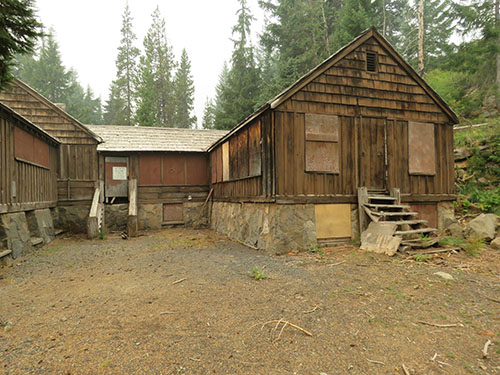
After 46 years of operation, the lodge closed in 1986 and has been ravaged by deterioration and vandals. New operators Dwight and Susan Sheets have obtained a long-term lease from the U.S. Forest Service, listed the building on the National Register of Historic Places, and are working to repair and re-open the beautiful lodge for tourism and events. The Sheets’ have made significant progress in their first year, receiving a total of $105,000 from four major grantors for work, including abatement of hazardous materials, removal of non-original additions to the facade, window repair, and winterizing. Most recently they are working to restore electricity to the lodge. To see how you can help by providing labor or materials, or make a financial contribution, visit www.santiampassskilodge.org.
WALDRON BROTHERS DRUGSTORE, THE DALLES (1864)
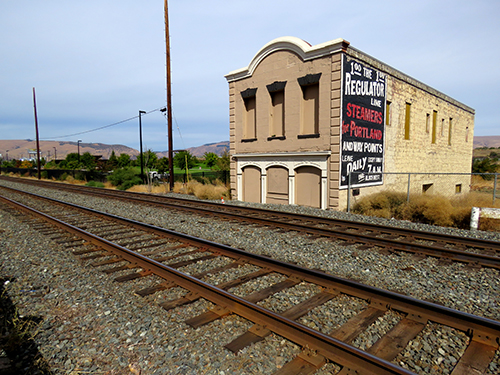
The Waldron Brothers’ Drugstore, also known as the Gitchell Building, is the oldest intact commercial building in The Dalles. Constructed during the Civil War of local stone, it has served many purposes in its 155 years: a Post Office and drugstore, town newspaper office and Masonic Lodge, ticket office, and later as apartments, offices, and even a haunted house. Repair work was done in 2009 to address areas of deterioration, but now the building is threatened with demolition. A group of concerned citizens has formed to work with The Dalles Main Street program, city officials, and residents to develop a plan for the rehabilitation and reuse of the Drugstore. In the past year, they have succeeded in completing a feasibility study for its reuse and, along with Restore Oregon staff, appealed to City Council to place a stay on demolition. This provides much-needed time to explore relocation options and assess the resources and cost of rehabilitating this critically endangered landmark. Visit https://www.thedallesmainstreet.org/waldron-bro-drug to learn more and offer your support.

